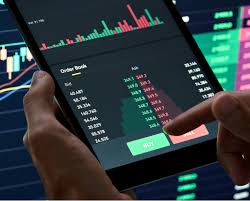
Understanding Crypto Trading Charts: A Comprehensive Guide to Their Utilization
In the fast-paced world of cryptocurrencies, traders rely heavily on various tools and techniques to make informed decisions. One of the most essential tools in any trader’s toolkit is the trading chart. In this article, we will delve deep into the realm of Crypto Trading Charts, exploring their types, how to read them, and the critical role they play in trading strategies.
Crypto Trading Charts click here for additional resources on crypto trading.
What Are Crypto Trading Charts?
Crypto trading charts are visual representations of the historical price performance of cryptocurrency. These charts provide traders with valuable insights into market trends, helping them predict future price movements. By analyzing chart patterns, traders can make educated guesses about when to buy or sell their assets, thus maximizing profits and minimizing losses.
Types of Crypto Trading Charts
There are several different types of charts commonly used in crypto trading. Each chart type serves its purpose and is suitable for different trading styles. Here are the most popular types:
1. Line Charts: These are the simplest form of charts, displaying price movements over time. A line chart connects closing prices with a continuous line, making it easy to identify trends.
2. Bar Charts: Bar charts provide more information than line charts. Each bar represents the open, high, low, and close prices for a specific time period, allowing traders to see market volatility.

3. Candlestick Charts: Candlestick charts are similar to bar charts but offer a more visual representation. Each “candlestick” displays the open, high, low, and close prices in a specific period, using colors to indicate whether the price increased or decreased.
4. Heiken Ashi Charts: This type of chart smoothens price fluctuations and helps traders identify trends more easily by averaging out the data.
How to Read Crypto Trading Charts
Reading crypto trading charts effectively can be the difference between a profitable trade and a loss. Here are critical elements to focus on:
1. Time Frames: Different traders use different time frames, from minutes to hours, days, and even weeks. The time frame you choose should align with your trading style—day traders might use minute charts, while swing traders prefer daily charts.
2. Trend Lines: Drawing trend lines on your charts helps in identifying support and resistance levels. A well-drawn trend line can indicate potential entry and exit points.
3. Volume Indicators: Volume is a crucial factor in confirming trends. High volume during a price increase suggests strong buying interest, while high volume during a price decline indicates strong selling pressure.
4. Technical Indicators: Using indicators like Moving Averages, Relative Strength Index (RSI), and MACD can assist traders in making more informed decisions. These indicators help in identifying overbought or oversold conditions and potential reversal points.
The Significance of Crypto Trading Charts in Trading
The significance of crypto trading charts cannot be overstated. They offer a wealth of information that can be leveraged to enhance trading strategies. Here some key benefits:
1. Identifying Trends: Charts provide a visual representation of market movements, helping traders identify prevailing trends, which is essential for entering and exiting trades effectively.

2. Making Data-Driven Decisions: Charts enable traders to make informed decisions based on historical data rather than emotions or speculation. This approach is particularly vital in the highly volatile crypto market.
3. Risk Management: By using chart patterns to set stop-loss and take-profit levels, traders can manage risk more effectively. Understanding where potential reversals may occur allows for better position sizing and capital protection.
Common Chart Patterns
Chart patterns are formations that traders look for to identify potential future price movements. Some of the most common chart patterns include:
1. Head and Shoulders: This pattern indicates a reversal and consists of three peaks—one higher peak (head) and two lower peaks (shoulders). It suggests that the upcoming trend may change from bullish to bearish.
2. Double Tops and Bottoms: These patterns signal trend reversals. A double top indicates a potential price decline after two peaks, while a double bottom suggests an upward trend after two troughs.
3. Flags and Pennants: These continuation patterns indicate a brief pause in the prevailing trend, allowing traders to enter before the trend resumes.
4. Triangles: Triangles can be ascending, descending, or symmetrical, indicating potential breakout points.
Conclusion
In conclusion, understanding crypto trading charts is vital for any trader seeking success in the cryptocurrency market. With various types of charts, the ability to read them effectively, and the knowledge of common patterns, traders can make informed decisions and manage their risks properly. Whether you are a novice or an experienced trader, mastering this skill can greatly enhance your trading experience and outcomes. By taking the time to learn and practice with these tools, you can position yourself for success in the exciting world of cryptocurrencies.